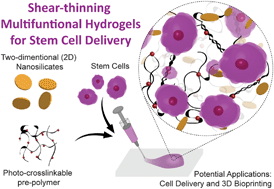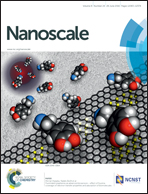Injectable shear-thinning nanoengineered hydrogels for stem cell delivery
Abstract
Injectable hydrogels are investigated for cell encapsulation and delivery as they can shield cells from high shear forces. One of the approaches to obtain injectable hydrogels is to reinforce polymeric networks with high aspect ratio nanoparticles such as two-dimensional (2D) nanomaterials. 2D nanomaterials are an emerging class of ultrathin materials with a high degree of anisotropy and they strongly interact with polymers resulting in the formation of shear-thinning hydrogels. Here, we present 2D nanosilicate reinforced kappa–carrageenan (κCA) hydrogels for cellular delivery. κCA is a natural polysaccharide that resembles native glycosaminoglycans and can form brittle hydrogels via ionic crosslinking. The chemical modification of κCA with photocrosslinkable methacrylate groups renders the formation of a covalently crosslinked network (MκCA). Reinforcing the MκCA with 2D nanosilicates results in shear-thinning characteristics, and enhanced mechanical stiffness, elastomeric properties, and physiological stability. The shear-thinning characteristics of nanocomposite hydrogels are investigated for human mesenchymal stem cell (hMSC) delivery. The hMSCs showed high cell viability after injection and encapsulated cells showed a circular morphology. The proposed shear-thinning nanoengineered hydrogels can be used for cell delivery for cartilage tissue regeneration and 3D bioprinting.



 Please wait while we load your content...
Please wait while we load your content...